- Related Products
- AD360
- Log360
- ADManager Plus
- ADSelfService Plus
- EventLog Analyzer
- Exchange Reporter Plus

 Click here to expand
Click here to expand
To find the server name, port, and protocol used by ADAudit Plus, log in to the ADAudit Plus console, navigate to the Admin tab > General Settings > Connection > NAT.
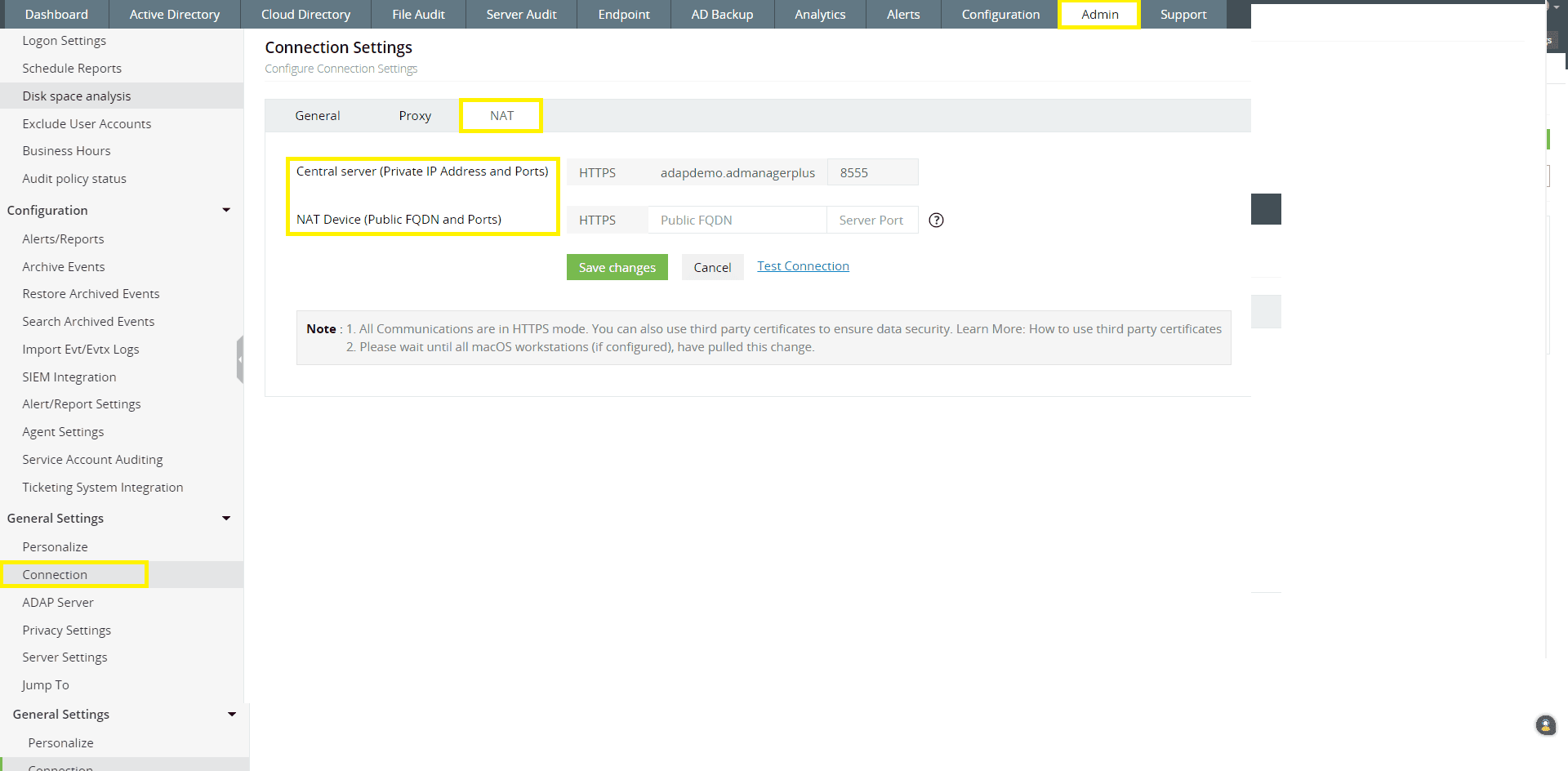
To find the org access key used by ADAudit Plus, log in to the ADAudit Plus console, navigate to the Admin tab > Configuration > Agent Settings > Agent Security Settings > Org access key for agent to server communication.
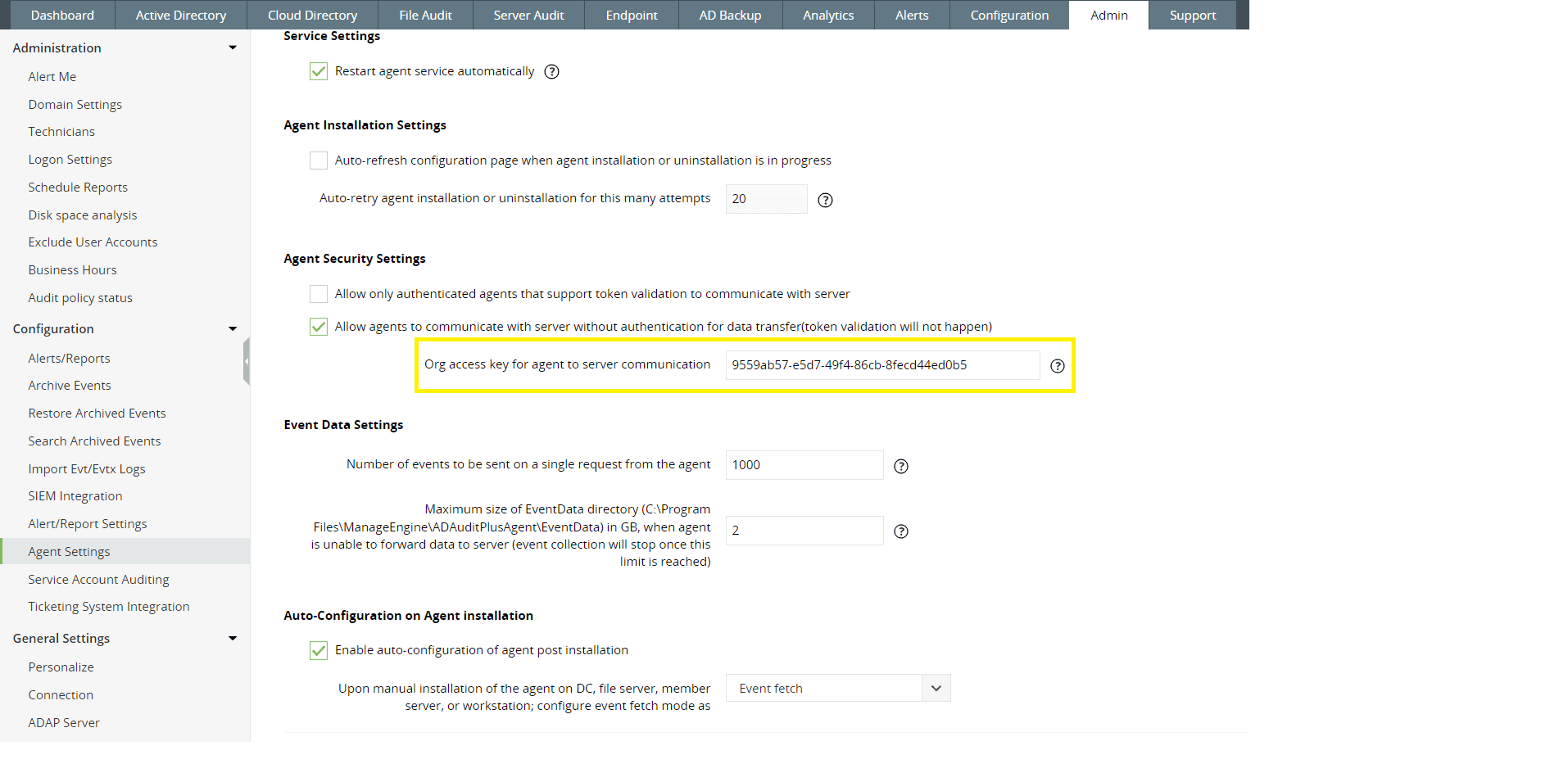
MST files are used by administrators to customize the behavior of an existing MSI file (MSI is an installer package file format used by Windows).
An MST file needs to be created using the ORCA tool, which is available under Windows SDK Components for Windows Installer Developers.
Note: The above files can be found under <ADAudit Plus installation directory>\webapps\adap\agent. If the target computer is running a 32-bit OS, choose ADAuditPlusAgent-x86.msi. If the target computer is running a 64-bit OS, choose ADAuditPlusAgent-x64.msi.
Here, ServerName refers to the name of the server where ADAudit Plus/NAT device is hosted.
ServerIP refers to the IP address of the server where ADAudit Plus/NAT device is hosted.
Build refers to the build number of your ADAudit Plus installation.
The build number is a 4 digit number that can be found by clicking on the license button located on the top right corner of your ADAudit Plus console.
Protocol refers to the protocol used for agent to server communication (HTTPS by default).
Port refers to the port number used for agent to server communication (8555 by default).
OrgAccessKey refers to the key used for agent to server communication (unique to each organization).
ServerFQDN refers to the FQDN of the server where ADAudit Plus/NAT device is hosted. For example, if ADAudit Plus is hosted on a DC named adap-dc2 in the adap.internal.com domain, the ServerFQDN is adap-dc2.adap.internal.com.Note: To find the ServerName, Port, Protocol, and OrgAccessKey used by ADAudit Plus, click here.
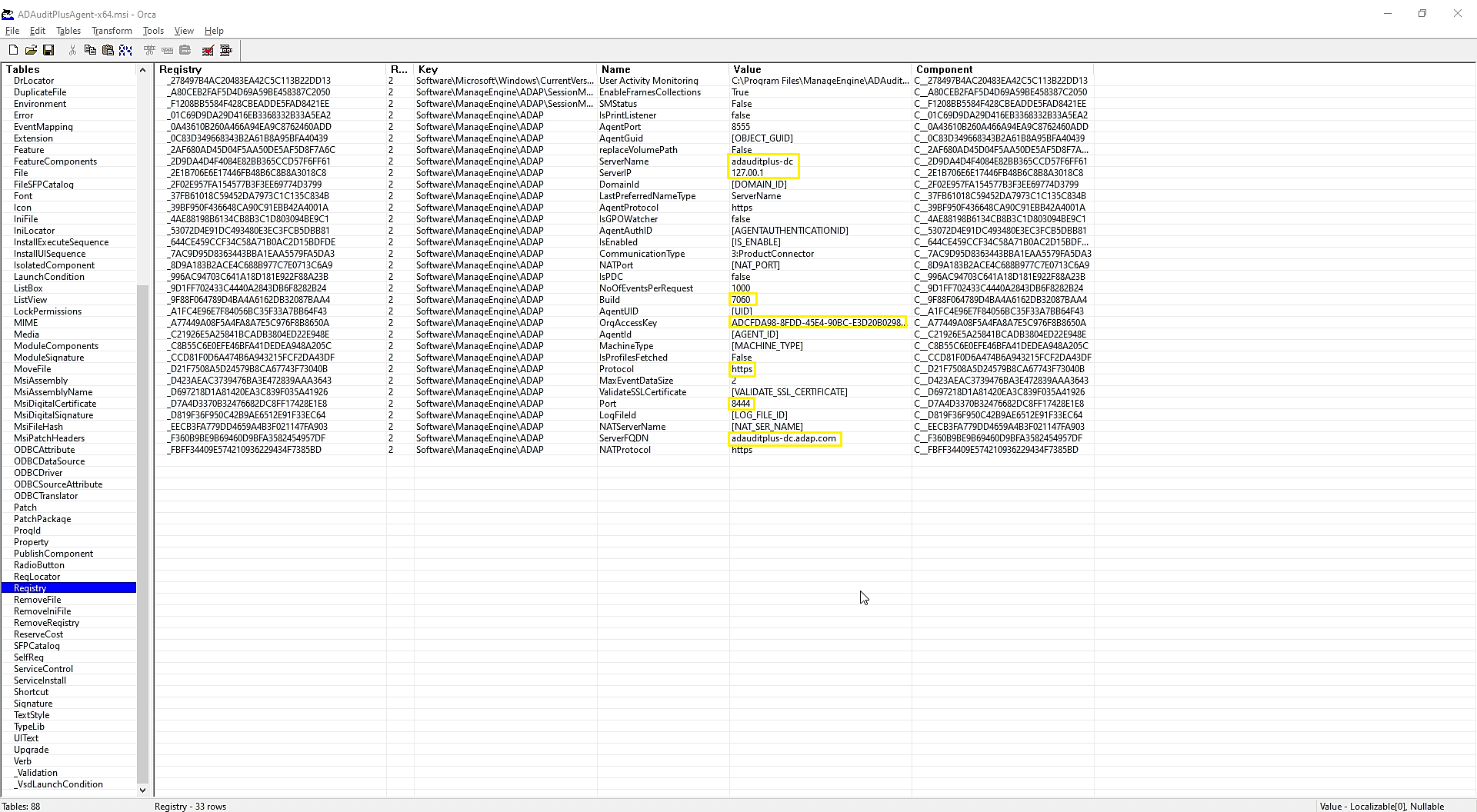
Note: The above files can be found under <ADAudit Plus installation directory>\webapps\adap\agent. For 32-bit installations choose ADAuditPlusAgent-x86.msi and for 64-bit installations choose ADAuditPlusAgent-x64.msi.
Note: For 32-bit installations type the full UNC of ADAuditPlusAgent-x86.msi and for 64-bit installations type the full UNC of ADAuditPlusAgent-x64.msi.
For example, in the dialog box, enter: \\Server_name\Shared_folder\ADAuditPlusAgent-x64.msi
Here, Server_name refers to the name of the server on which the file resides. Shared_folder refers to the folder created in step iv under Create an MST file.
Note: Ensure that you enter the full UNC path as opposed to the local/network path.
Note: Again, ensure that you enter the full UNC path as opposed to the local/network path.
Once the computers restart, the ADAudit Plus agent will get automatically installed.
Note: Reboot of server is not required after agent installation.
Provide the below arguments while installing the agent:
Server name: The name of the server where ADAudit Plus/NAT device is hosted.
Port: The port number used for agent to server communication (8555 by default).
Protocol: The protocol used for agent to server communication (HTTPS by default).
OrgAccessKey refers to the key used for agent to server communication (unique to each organization).
Note: To find the ServerName, Port, Protocol, and OrgAccessKey used by ADAudit Plus, click here.
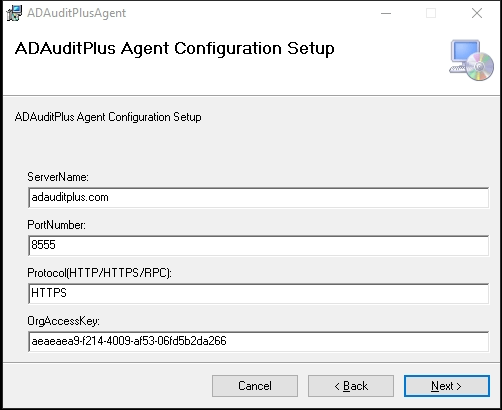
Note: Reboot of server is not required after agent installation.
On the target computer, open an elevated Command Prompt (right-click Command Prompt and select Run as administrator), and execute the below command:
msiexec /i "MSI file location" PROTOCOL=HTTPS PORT=8444 SERVERNAME=adap-dc2 SERVERFQDN=adap-dc2.adap.internal.com SERVERIP=192.168.225.33 OrgAccessKey=ADCFDA98-8FDD-45E4-90BC-E3D20B029870 /q
Copy MSI files from this location, <Installation_folder>\webapps\adap\agent, and save it on the target computer. Add the MSI file location (on the target computer) in the command above.
Note: Choose the appropriate MSI based on the OS version on your client computer.
For 32-bit versions: ADAuditPlusAgent-x86.msi
For 64-bit versions: ADAuditPlusAgent-x64.msi
Here,
ServerName refers to the name of the server where ADAudit Plus/NAT device is hosted.
ServerIP refers to the IP address of the server where ADAudit Plus/NAT device is hosted.
Protocol refers to the protocol used for agent to server communication (HTTPS by default).
Port refers to the port number used for agent to server communication (8555 by default).
OrgAccessKey refers to the key used for agent to server communication (unique to each organization).
ServerFQDN refers to the FQDN of the server where ADAudit Plus/NAT device is hosted. For example, if ADAudit Plus is hosted on a DC named adap-dc2 in the adap.internal.com domain, the ServerFQDN is adap-dc2.adap.internal.com.
Note: To find the ServerName, Port, Protocol, and OrgAccessKey used by ADAudit Plus, click here.
Reboot of server is not required after agent installation.
To install the ADAudit Plus agent via Endpoint Central, follow the below steps:
Note: The above files can be found under <ADAudit Plus installation directory>\webapps\adap\agent. If the target computer is running a 32-bit OS choose ADAuditPlusAgent-x86.msi and if it is running a 64-bit OS choose ADAuditPlusAgent-x64.msi.
Here,
ServerName refers to the name of the server where ADAudit Plus/NAT device is hosted.
ServerIP refers to the IP address of the server where ADAudit Plus/NAT device is hosted.
Build refers to the build number of your ADAudit Plus installation.
The build number is a 4 digit number that can be found by clicking on the license button located on the top right corner of your ADAudit Plus console.
Protocol refers to the protocol used for agent to server communication (HTTPS by default).
Port refers to the port number used for agent to server communication (8555 by default).
OrgAccessKey refers to the key used for agent to server communication (unique to each organization).
ServerFQDN refers to the FQDN of the server where ADAudit Plus/NAT device is hosted. For example, if ADAudit Plus is hosted on a DC named adap-dc2 in the adap.internal.com domain, the ServerFQDN is adap-dc2.adap.internal.com.
Note: To find the ServerName, Port, Protocol, and OrgAccessKey used by ADAudit Plus, click here.
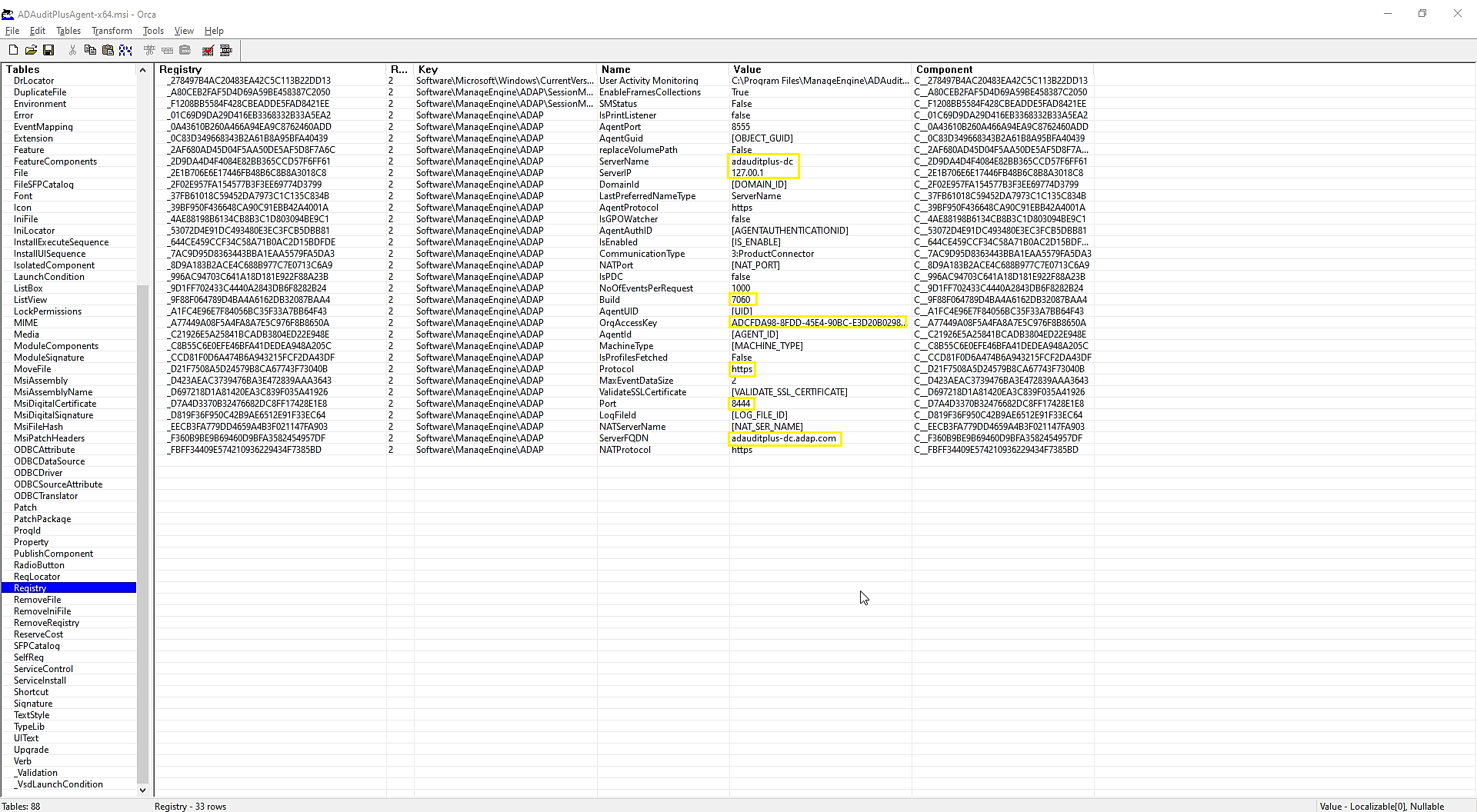
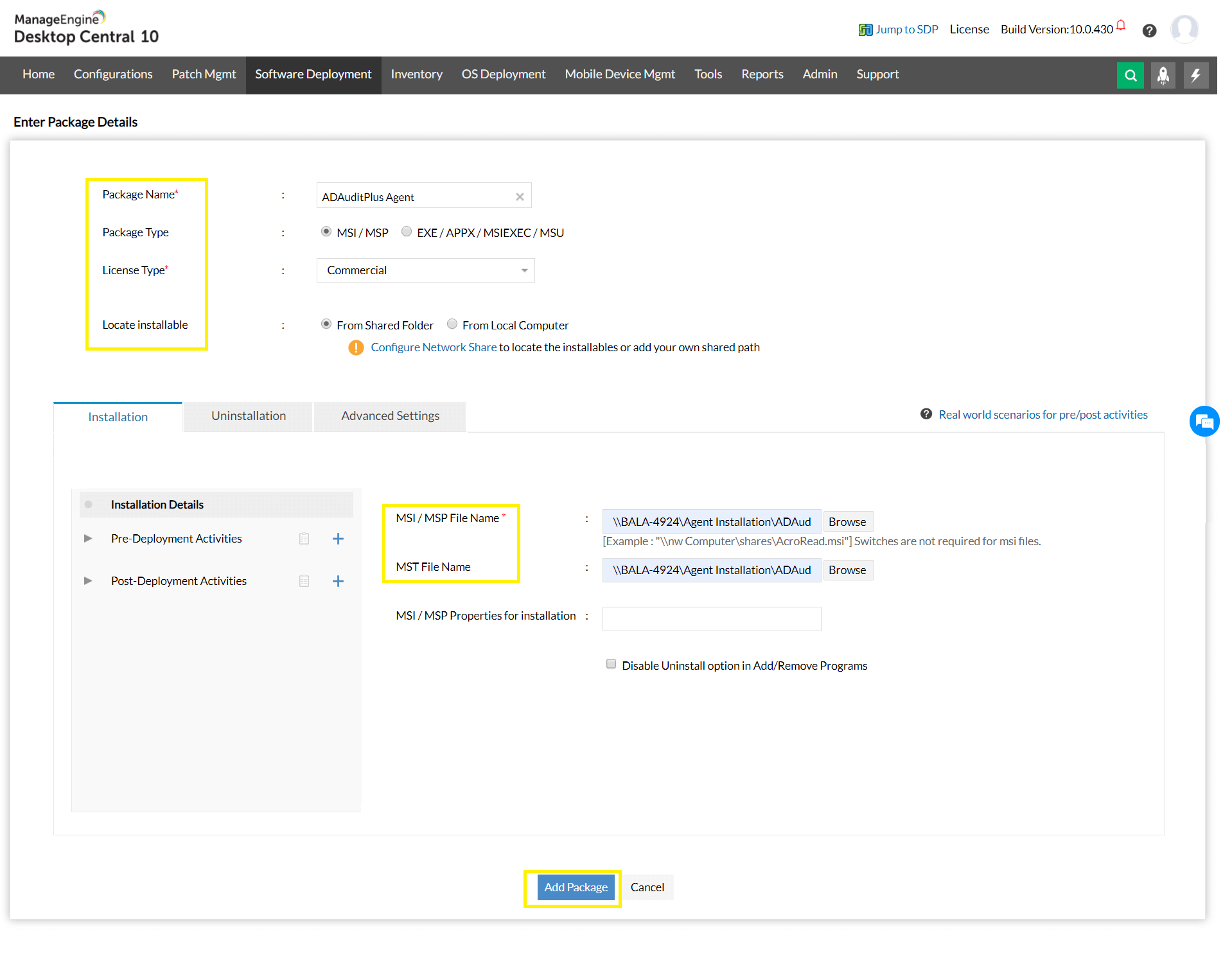
For example, msiexec /i \\Steven-10123\ADAuditPlusAgent-x64.msi PROTOCOL=HTTPS PORT=8444 SERVERNAME=Steven-10123 SERVERFQDN=Steven-10123.adap.internal.com SERVERIP=192.168.225.33 OrgAccessKey=ADCFDA98-8FDD-45E4-90BC-E3D20B029870 /q
Here,
ServerName refers to the name of the server where ADAudit Plus/NAT device is hosted.
ServerIP refers to the IP address of the server where ADAudit Plus/NAT device is hosted.
Protocol refers to the protocol used for agent to server communication (HTTPS by default).
Port refers to the port number used for agent to server communication (8555 by default).
OrgAccessKey refers to the key used for agent to server communication (unique to each organization).
ServerFQDN refers to the FQDN of the server where ADAudit Plus/NAT device is hosted. For example, if ADAudit Plus is hosted on a DC named adap-dc2 in the adap.internal.com domain, the ServerFQDN is adap-dc2.adap.internal.com.
Note: To find the ServerName, Port, Protocol, and OrgAccessKey used by ADAudit Plus, click here.
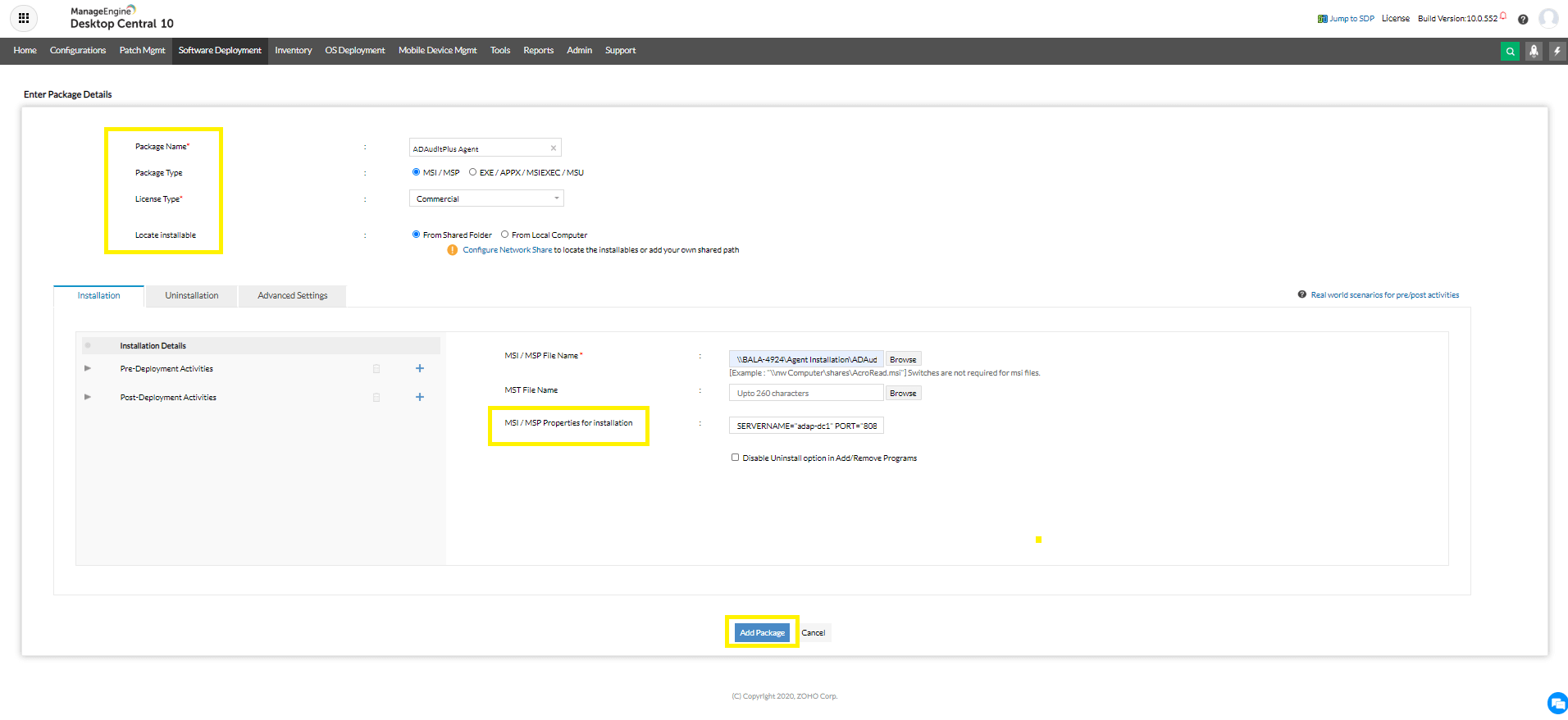
Note: Reboot of server is not required after agent installation.
Copyright © 2020, ZOHO Corp. All Rights Reserved.